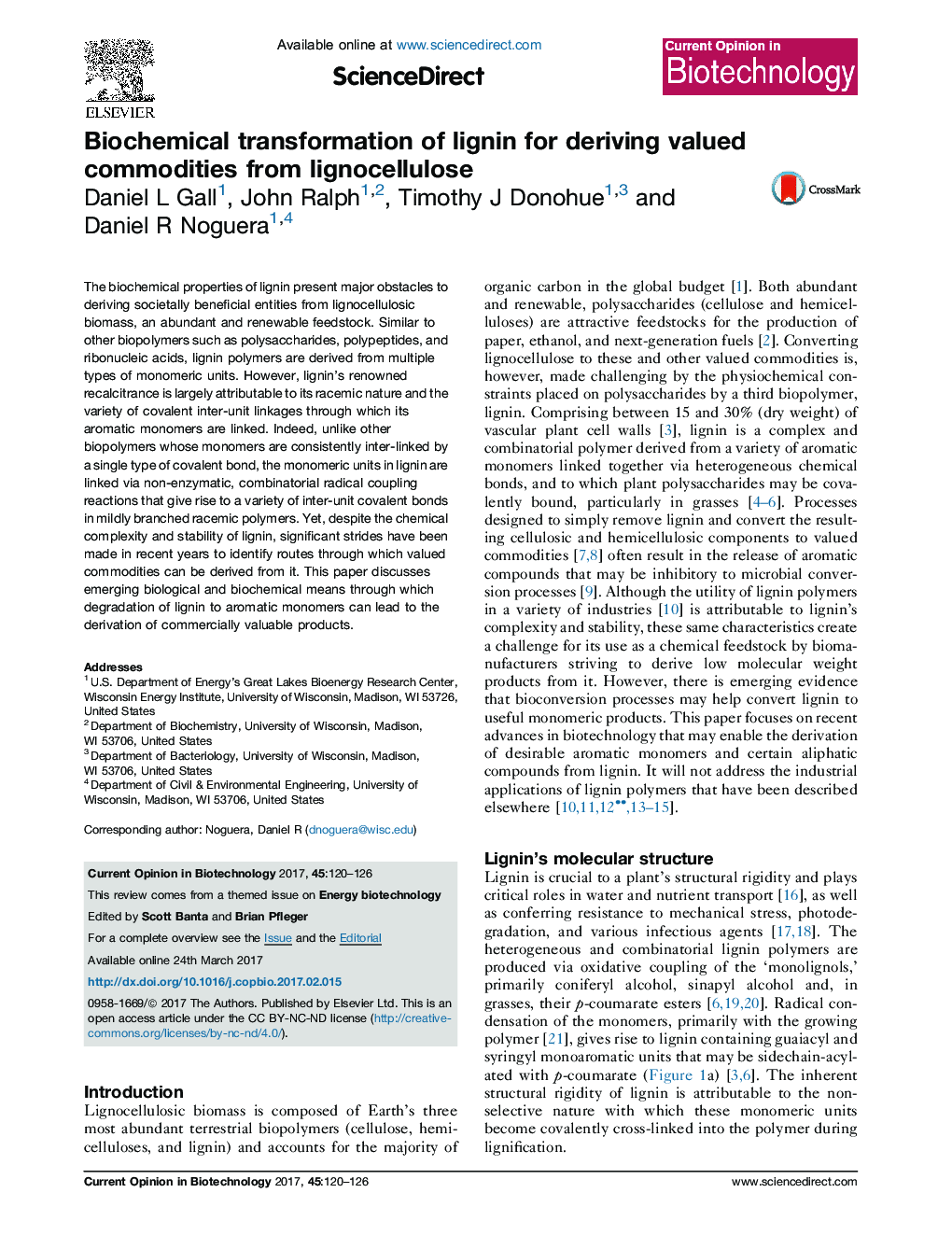| Article ID | Journal | Published Year | Pages | File Type |
|---|---|---|---|---|
| 6451657 | Current Opinion in Biotechnology | 2017 | 7 Pages |
â¢Lignin polymers are composed of heterogeneous aromatic monomeric units.â¢Lignin monomers are linked together via various types of inter-unit covalent bonds.â¢Cleavage of semi-labile inter-unit linkages may yield lower molecular derivatives.â¢Both chemical and biochemical methods catalyze cleavage of inter-unit linkages.â¢Lignin derivative compounds are valuable commodities in several industries.
The biochemical properties of lignin present major obstacles to deriving societally beneficial entities from lignocellulosic biomass, an abundant and renewable feedstock. Similar to other biopolymers such as polysaccharides, polypeptides, and ribonucleic acids, lignin polymers are derived from multiple types of monomeric units. However, lignin's renowned recalcitrance is largely attributable to its racemic nature and the variety of covalent inter-unit linkages through which its aromatic monomers are linked. Indeed, unlike other biopolymers whose monomers are consistently inter-linked by a single type of covalent bond, the monomeric units in lignin are linked via non-enzymatic, combinatorial radical coupling reactions that give rise to a variety of inter-unit covalent bonds in mildly branched racemic polymers. Yet, despite the chemical complexity and stability of lignin, significant strides have been made in recent years to identify routes through which valued commodities can be derived from it. This paper discusses emerging biological and biochemical means through which degradation of lignin to aromatic monomers can lead to the derivation of commercially valuable products.
